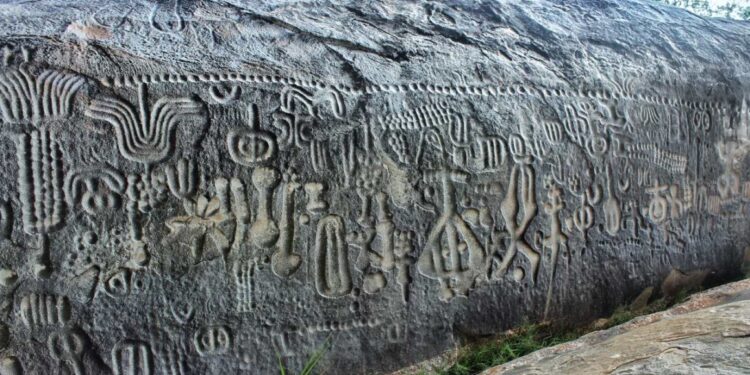Near the city of Ingá in Brazil, on the banks of the Ingá River, located one of Brazil’s most intriguing archaeological discoveries “The Ingá Stone”. It is also known as the Itacoatiara do Ingá, which translates to “stone” in the Tupi language of the natives that once lived in that area.
The Ingá stone has a total surface area of 250 square meters. It is a vertical structure that is 46 meters long and up to 3.8 meters high. The most intriguing part about this stone is its odd geometric symbols of varying shape and size that appear to be carved on its outer layer of gneiss.
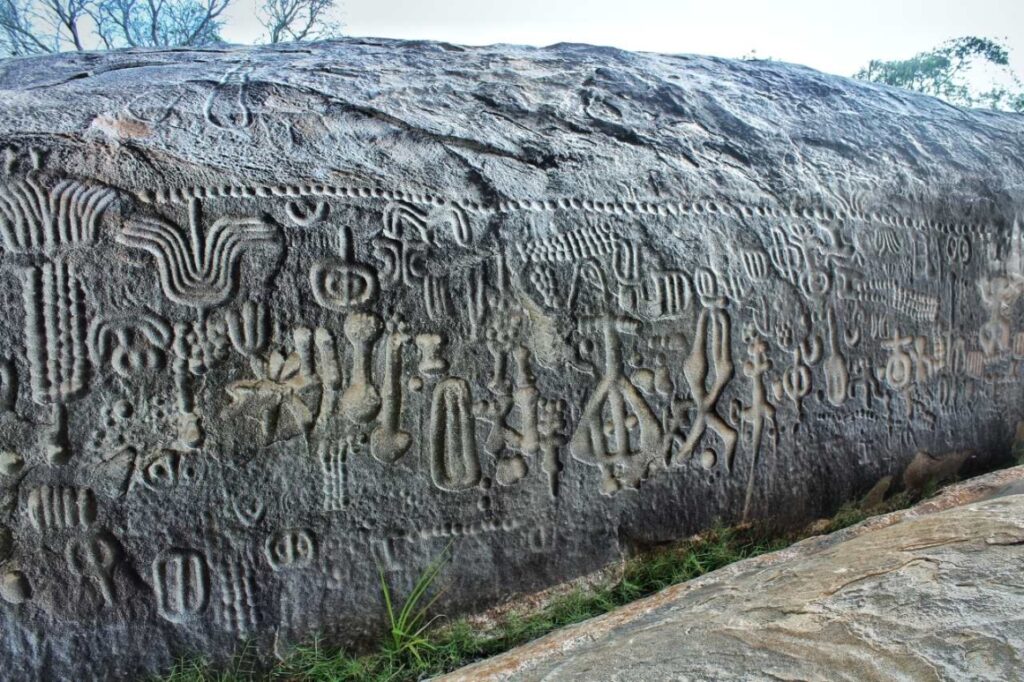
Despite the fact that many specialists have hypothesized about the origins and meanings of these symbols, no one theory has been shown to be convincingly 100 percent correct. Is it a message left by our ancestors for future generations? Was there an undiscovered culture with ancient technology that had been forgotten millennia ago? What exactly do these mysterious symbols represent? Moreover, who carved them on the rock wall, and why?
Piedra de Ingá is a global archaeological wonder due to its age of at least 6,000 years. In addition to caverns, there are additional stones in the vicinity of the Inga Stone that also contain carvings on their surfaces.
However, they do not achieve the same level of sophistication in their elaboration and aesthetic as the Ingá Stone does. Gabriele Baraldi, a renowned archaeologist and researcher, discovered one of these caves in the Ingá region in 1988; since then, numerous others have been uncovered.
In total, Baraldi inspected up to 497 symbols on the cave walls. The majority of Ingá’s engravings are gloomy, however several of them clearly resemble celestial components, two of which are nearly identical to the Milky Way and the constellation of Orion.
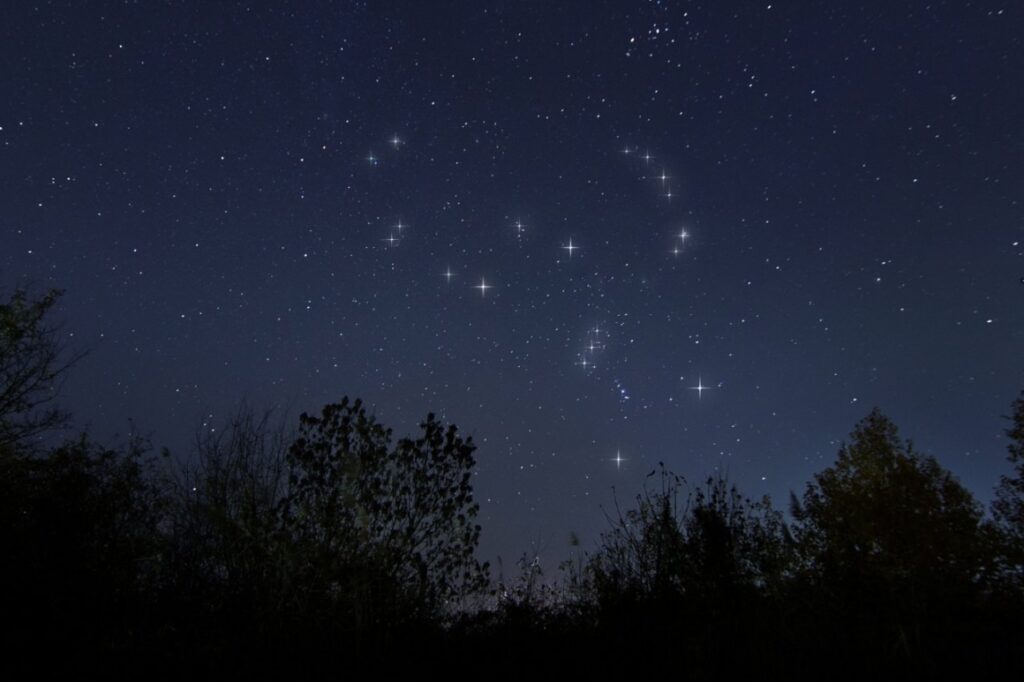
Other petroglyphs have been interpreted as animals, fruits, weapons, human figures, ancient (or fictional) airplanes or birds, and even a crude “index” of the different stories separated into parts, with each sign related to the relevant chapter number.
Father Ignatius Rolim, a Greek, Latin, and theology professor, has confirmed that the markings on the Stone of Ingá are identical to those on ancient Phoenician carvings. Rolim, in fact, was one of the first to propose this hypothesis.
Other scholars have noticed parallels between the symbols and ancient runes, as well as similarities in intricacy and linear organization with a probable brief passage of religious scriptures.
Ludwig Schwennhagen, an Austrian-born researcher, studied the history of Brazil at the beginning of the twentieth century, discovering significant links between the appearance of the symbols of Ingá, not only with the Phoenician script but also with the demotic (more commonly associated with documents writings, both literary and business) of ancient Egypt.
Researchers discovered a striking similarity between the carvings of Ingá and native art found on Easter Island. Some ancient historians, like as author and scholar Roberto Salgado de Carvalho, set out to explore each of the symbols in greater depth.
According to scholars, the concentric circles etched on the Stone of Ingá might be phallic emblems, while the spiral forms could represent “transcosmological excursions or displacements,” most likely owing to shamanic trances.
Perhaps altered states of consciousness, or even the use of hallucinogens, while shapes like the letter “U” may represent a uterus, rebirth, or an entrance, this is according to Salgado de Carvalho.
In this view, the succession of symbols might indicate to an old formula inscribed on the Stone of Ingá, potentially used to access a “portal to the supernatural realm,” as Salgado de Carvalho himself put it.
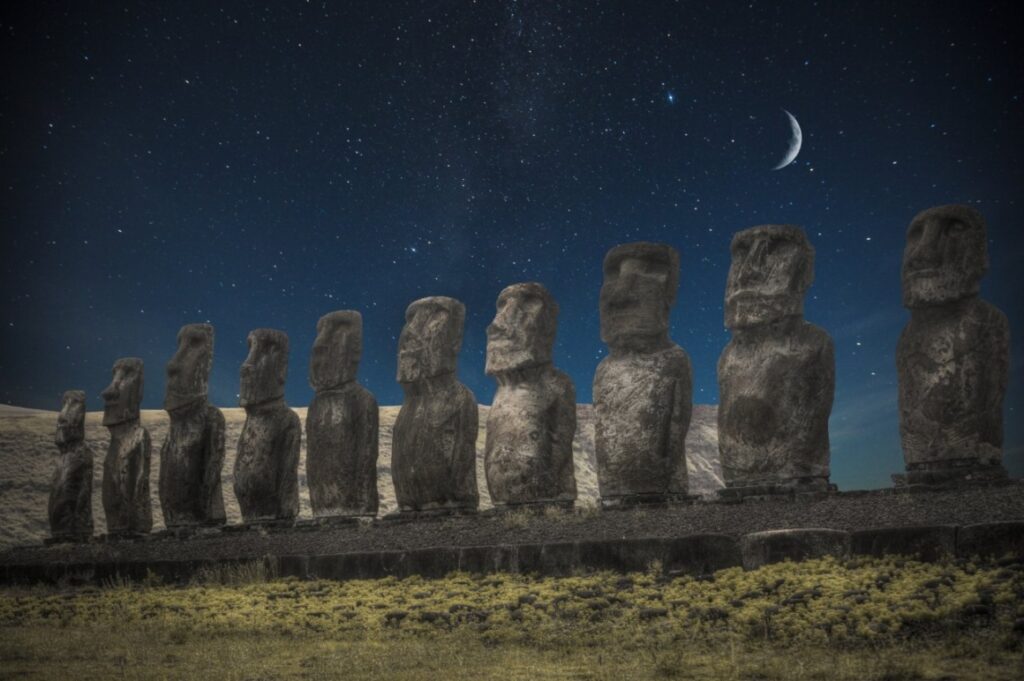
Other researchers have speculated that these ancient engravings were a warning to future generations of the impending (or maybe recent) apocalypse, in which the inhabitants of the period would have momentarily maintained their technology from a prior civilization.
On the other hand, the possibility of more than one language being inscribed on the stone opens up a whole new set of options. Since there is no historical evidence tying the portrayal of stars and constellations https://getzonedup.com with the Brazilian indigenous of this age, it is conceivable that the engravers were part of a nomadic culture or human group that was passing through the region.
Some argue that the ancient Indian societies might have created these petroglyphs with extraordinary effort and skill using just the standard lithic tools for engraving of the time.
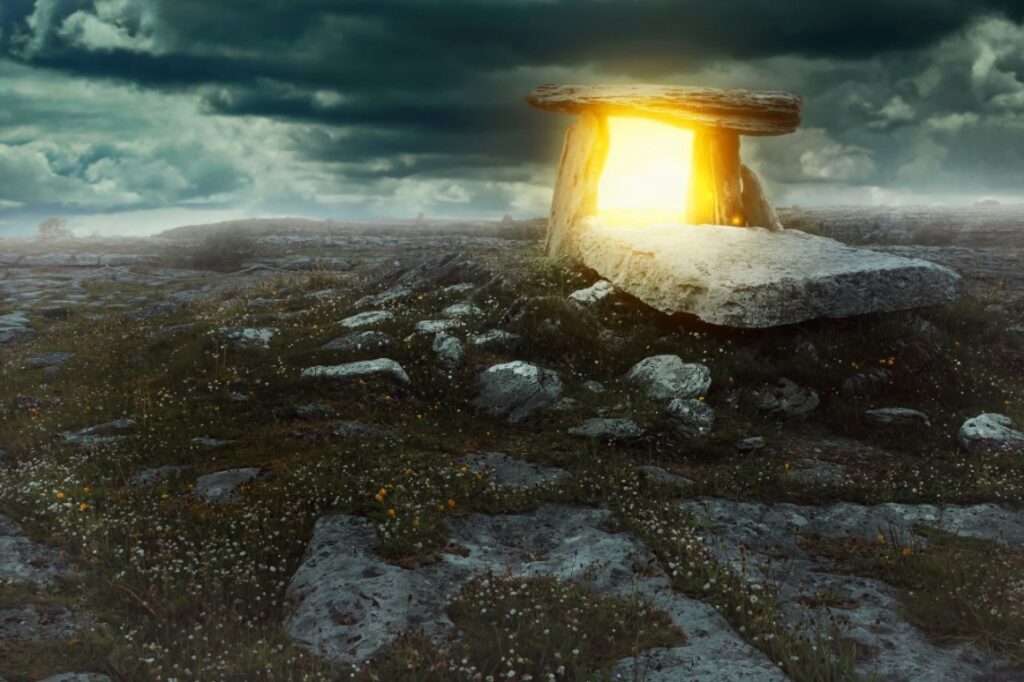
Another fascinating idea, offered by Baraldi, contends that an ancient society used geothermal energy processes to produce these symbols, employing molds and lava conduits from dormant volcanoes.
Furthermore, because the symbols of Ingá are so different from the rest of the symbols found so far in the region, some researchers, such as Claudio Quintans of the Paraiban Center of Ufology, believe that a spacecraft may have landed in the Ingá area in the remote past and the symbols were traced on the rock walls by the extraterrestrial visitors themselves.
Others, such as Gilvan de Brito, author of “Journey to the Unknown,” believe that the symbols of the Stone of Ingá correspond to old mathematical formulae or equations that explain quantum energy or the distance covered on travels between celestial bodies such as the Earth and the Moon.
However, regardless of whatever explanation appears to be the most compelling, there is little dispute about the significance of this discovery. Engravings on the Stone of Ingá would have a very unique meaning for someone and would be expressed thoroughly.
But, more significantly, what was the point? And how much of it is still applicable today? We might hope that as technology and our understanding of our own civilization’s development, we will be able to better comprehend these enigmatic symbols and shed some light on this and other ancient mysteries that are waiting to be unfolded.

